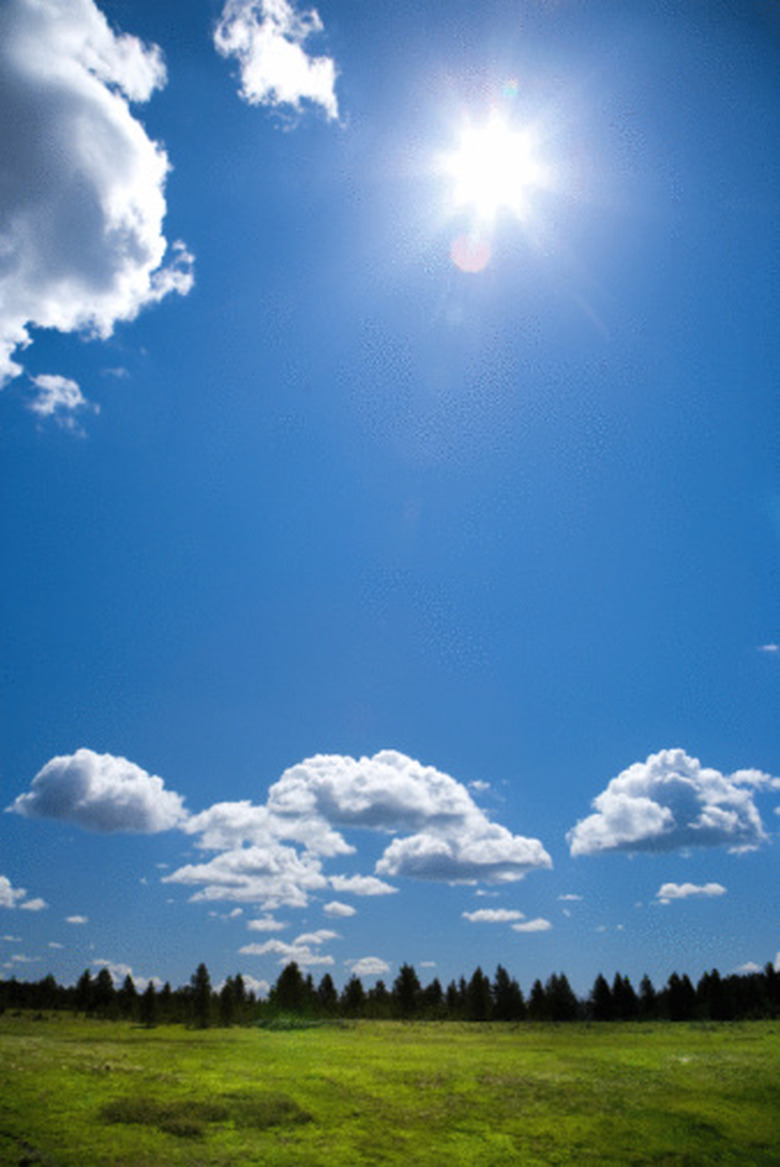Can Plants Live Without Sunlight?
A question that always arises among people who care for plants is whether those plants can indeed live without sunlight. Plants, in fact, depend on light they can absorb to produce energy they can use. And because plants are highly adapted to use light for their energy needs, they can't survive for long without it. Plants use photosynthesis to convert light to energy, and if there's no light there's no way to create energy.
Sunlight
Sunlight is the light most preferred by plants because they've evolved over millions of years to use it efficiently. Sunlight itself contains all seven of the separate colors of light contained within the visible spectrum. Sunlight is also known as white light, though there's actually no color of white within it. Rather, sunlight contains red, orange, yellow, green, blue, indigo and violet-colored light. Among the seven separate colors contained within sunlight, plants especially favor blue and red light for their growth needs.
- A question that always arises among people who care for plants is whether those plants can indeed live without sunlight.
- And because plants are highly adapted to use light for their energy needs, they can't survive for long without it.
Plant Photoreceptors
Over the course of evolution, plants developed specific cells to absorb sunlight, process it and convert it to usable energy. These cells, called photoreceptors, are highly attuned to the red and blue colors within sunlight. Unfortunately, plant photoreceptors can't really adapt to a life without light. However, plant photoreceptors don't really care where light comes from as long as it's of the right type, meaning light that contains red and blue wavelengths.
Light Deprivation
As plants are deprived of light over a period of days, they begin to wear down and become tired. Most plants expect an average of 10 to 16 hours of light per day, and power themselves up accordingly. When plants don't receive sunlight, for example, their own life processes can't be supported because they eventually run out of energy.
- Over the course of evolution, plants developed specific cells to absorb sunlight, process it and convert it to usable energy.
- However, plant photoreceptors don't really care where light comes from as long as it's of the right type, meaning light that contains red and blue wavelengths.
Considerations
Plants gather the majority of the sunlight they need through their leaves, which is where most of their photoreceptors are located. Leaves that don't benefit from light will begin to droop, as will their branches and stems (where smaller numbers of photoreceptors lie). If a lack of sunlight continues, leaves start yellowing, withering and dying as photoreceptors run out of things to do, and shut down. Sooner or later, a plant deprived of sunlight will die.
Ensuring Light
If you're worried that there's not enough sunlight for your plant, you can always place it under fluorescent light. Fluorescent lights carry more than enough blue light to power a plant's vegetative growth, meaning it will survive quite well under such lighting. Fluorescent lights are also very low in heat so you can place them close to your plants without burning or harming them. Just make sure to also give your plants several hours of dark as well as light to ensure optimum growth.
- Plants gather the majority of the sunlight they need through their leaves, which is where most of their photoreceptors are located.
